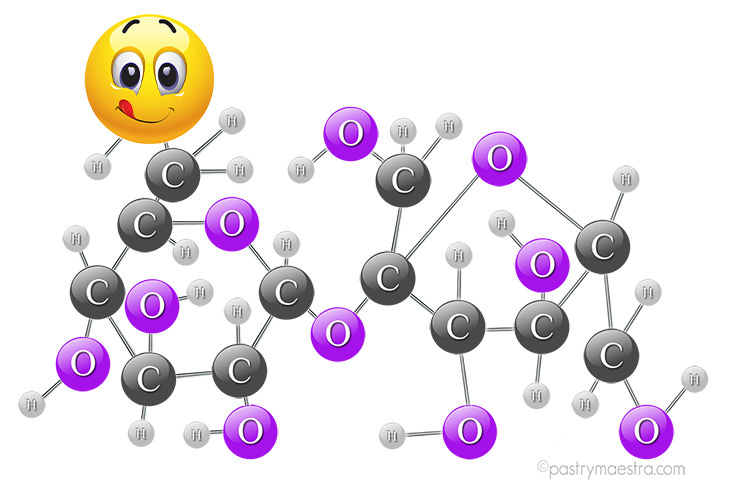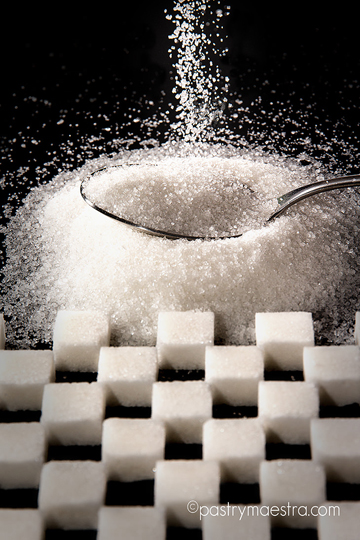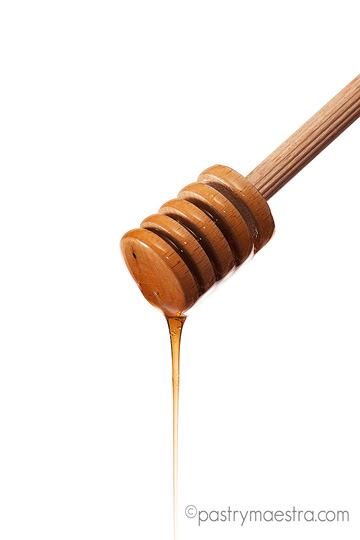

C
an you imagine that I really like my coffee black and with no sugar whatsoever? I just love that taste of deep, warm bitterness spreading through my mouth. And with that indulging sip of afternoon coffee, there is nothing better than a bite of something sweet!
When I hear words ‘something sweet’, I usually instantly think of milk chocolate with caramel and pecan nuts, which is my favorite at the moment (there are always two bars in the fridge, just in case). However, when I want to sweeten up somebody else’s coffee, I dare to say that my hand naturally stretches out to a cupboard and grabs a jar of pure white crystallized sugar.
The average person consumes about 24 kilograms (53 lb) of sugar each year, equivalent to over 260 food calories per person, per day. You will probably find lots of studies revealing harmful effects of white sugar, like gaining weight, taking empty calories and processed food, lack of nutrients, etc. So, is white sugar everyday necessity, or a tabu? Well I say – you are not supposed to gorge yourself with the stuff, but if you are healthy, and (like myself) you like to enjoy a bar of your favorite chocolate, or a piece of delicious cake – guilt free, just go for it! I said, a piece, not the whole cake!
Types of Sugar
By the term ‘sugars’ we mean carbohydrates – chemical compounds containing atoms of carbon, hydrogen, and oxygen. Carbohydrates are one of the main nutrients. They are the most important source of energy for our body, which changes complex sugars into glucose – a simple sugar. Glucose travels through our body by blood, giving energy directly to our cells. Simple carbohydrates are called monosaccharides, more complex ones are called disaccharides, and the most complex carbohydrates are polysaccharides.
White Sugar

White sugar, also called table sugar, or sucrose is a disaccharide that hydrolyses into glucose and fructose when eaten. It can be refined from sugar cane or sugar beet into an odorless, white crystalline powder – the most often used sweetener in food preparation. There is regular granulated sugar with larger crystals, and superfine granulated sugar or caster sugar with small crystals.
Powdered Sugar
Also called icing sugar or confectioner’s sugar, is extra fine white sugar, ground in special grinders and then sifted in different grades of fineness. Designation 10X is the finest, and 6X or 4X are less fine. Due to its tendency to lump, 3% of corn starch is usually added to powdered sugar.
Glucose
Glucose (dextrose or grape sugar) is a monosaccharide that is naturally found in fruits. It is available in a form of very thick, transparent syrup. Glucose is produced commercially via the enzymatic hydrolysis of starch. Different grains can be used as the source of starch – maize, rice, wheat, cassava, corn husk and sago are all used in various parts of the world. In the United States, corn starch (from maize) is used almost exclusively. Most commercial glucose occurs as a component of invert sugar, a roughly 1:1 mixture of glucose and fructose. In patisserie, we use pure glucose to prevent crystallization when cooking sugar syrup, to give shine to a glaze, in confectionary for caramels and bonbon fillings.
Fructose
Fructose or fruit sugar is another monosaccharide, also found in fruits, but also in honey, flowers and most root vegetables. Pure, dry fructose is a very sweet (sweeter than regular white sugar), white, odorless, crystalline solid and is the most water-soluble of all the sugars. Commercially, fructose is frequently derived from sugar cane, sugar beets, and corn. Crystalline fructose is the monosaccharide, dried, ground, and of high purity. About 240,000 tons of crystalline fructose are produced annually.
High-fructose corn syrup (HFCS) is a mixture of glucose and fructose as monosaccharides. All forms of fructose, including fruits and juices, are commonly added to foods and drinks for palatability and taste enhancement, and for browning of some foods, such as baked goods.
Brown Sugar
Brown sugar is usually made of sugar cane. The brown color comes from molasses, a by-product of sugar refining. The content of molasses can vary from 3.5%-6.5%. It can be either unrefined or partially refined, and it is naturally moist, because of molasses which tends to retain water.
There are several sorts of brown sugar – Demerara, light brown sugar, dark brown sugar, Muscovado, Turbinado, Rapadura, whole cane sugar etc. Each has a different degree of refinement and different molasses content.
If you don’t have any brown sugar at home, and you don’t feel like going to the store, there is a very simple recipe for making it at home. Mix 250 g (8.8oz) of regular white granulated sugar with 25 g (0.8oz) of molasses. Blend in a food processor, and there you are!
Molasses
Molasses is a dark, thick liquid usually produced from refining sugar cane. Molasses can also be produced from sugar beet, grapes and other plants. It comes in three types. The light brown molasses is created after first boiling of sugar cane syrup. We get dark brown after second boiling, and after third boiling we get blackstrap molasses or black treacle. Blackstrap molasses has the lowest sugar content of all types of molasses, and it contains lots of minerals and vitamins like Magnesium, Iron, Calccium, vitamin B6, etc. Molasses is used as a main ingredient in production of rum, as a source of yeast production, we often add it to rye breads and some cookies.
Golden Syrup
Golden syrup is a thick, amber-colored syrup, a form of inverted sugar. It is made in the process of refining sugar beet or sugar cane juice into sugar, or by heating sugar syrup and treating it with an acid, which splits the sucrose into its components – glucose and fructose. The final stage of sugar refinement is called black treacle, which is the same product like molasses. Golden syrup and black treacle are British products, while molasses is widely used in America.
Corn Syrup
Corn syrup is a thick, sweet syrup that is sold in light and dark color varieties. It is produced from processed corn starch, and it contains maltose and other oligosaccharides. Light corn syrup is clarified, and dark one has coloring and caramel flavor added.
You should notice there is a difference between Corn syrup and high-fructose corn syrup (HFCS), which is manufactured from corn syrup by converting a large proportion of its glucose into fructose, thus producing a sweeter product due to higher levels of fructose (see the photo).
Corn syrup is used in foods to soften texture, add volume, prevent crystallization of sugar, and enhance flavor. Corn syrup’s major uses in commercially prepared foods are as a thickener, a sweetener and as a an ingredient that retains moisture and maintains food’s freshness.
Honey

Honey is a natural sweetener created by bees from flowers. It gets sweetness from monosaccharides glucose and fructose. Honey has been used in ancient Egypt, India and China, not just as a sweetener, but also as a medicine for wide variety of problems – cough, gastric disturbances, ulcers, wounds and burns. Most microorganisms do not grow in honey because of its low water activity. However, honey sometimes contains dormant endospores of the bacterium Clostridium botulinum, which can be dangerous to infants, as the endospores can transform into toxin-producing bacteria in infants’ immature intestinal tracts, leading to illness and even death. Wow, who would say that honey is such a healthy, and at the same time dangerous food!
Honey is probably the first known sweetener in Europe. Over its history as a food, the main uses of honey are in cooking, baking, desserts, as a spread on bread, and as an addition to various beverages, such as tea, and as a sweetener in some commercial beverages.
Malt Syrup
Malt is another natural sweetener produced from grains. The most common grain used is barley, but it can be made from wheat, rice or corn. The grains are soaked in water where they germinate. This process is called germinating. Germinating develops enzymes that modify grain starches into less complex carbohydrates – glucose, a disaccharide maltose and maltodextrins. Barley malt syrup is a dark brown, thick and sticky sweetener half as sweet as white sugar, but with distinctive taste. Since it contains complex sugars, it doesn’t raise blood sugar as white sugar does, so it is often used by diabetics and people who avoid sucrose.
Maple Syrup
Maple syrup is made from several sorts of maple trees. Its basic ingredient is sap which consists primarily of sucrose and water, with small amounts of other sugars. The sap is processed by heating to evaporate much of the water, leaving the concentrated syrup. Maple syrup is often eaten with pancakes, waffles, French toast, or oatmeal and porridge. It is also used as an ingredient in baking, and as a sweetener or flavoring agent.
The Grade A maple syrup is the only one you should be able to find in your supermarkets. Inside Grade A, there are a few types:
- Golden Color and Delicate Taste Maple Syrup
- Amber Color and Rich Taste Maple Syrup
- Dark Color and Robust Taste Maple Syrup
- Very Dark Color and Strong Taste Maple Syrup
Agave Syrup or Agave Nectar
Agave syrup is a natural sweetener produced from several species agave cactus. It is produced by heating the juice extracted from the core of the agava, which breaks complex carbohydrates into simple sugars, mostly fructose.
Because of its high fructose content, agave syrup is 1.4 to 1.6 times sweeter than white sugar, and is often substituted for sugar or honey in recipes. In baking, it is commonly used as a vegan alternative to honey or other sweeteners that are considered less healthy. Agave syrup dissolves quickly, so it can be used as a sweetener for cold beverages such as iced tea. It can also be added to some breakfast cereals as a binding agent.
Agave syrups are sold in 4 types: light, amber, dark, and raw.
Light agave syrup has a mild, almost neutral flavor, and is often used in delicate-tasting dishes and beverages.
Amber agave syrup has a medium-intensity caramel flavor and it can be used in dishes and drinks with stronger flavors.
Dark agave syrup has stronger caramel notes and imparts a distinct flavor to dishes, such as some desserts, poultry, meat, and seafood dishes. Both, amber and dark agave syrups are sometimes used “straight out of the bottle” as a topping for pancakes, waffles, and French toast. The dark version is unfiltered and therefore contains a higher concentration of the agave plant’s minerals.
Raw agave syrup is produced at temperatures below 48 °C (118 °F), which protects its natural enzymes, so this variety is considered to be an appropriate sweetener for raw foodists.
Palm Sugar
Palm sugar is a natural sweetener made out of the sap of a date palm, sugar date palm, or other palms. It is produced by tapping the sap from the palm tree, and boiling it off to get a thick syrup, which is then sold as is, or allowed to crystallize into various shapes and sizes. Palm sugar has a complex caramel flavor, but it is milder than molasses. It is less sweet than white sugar.
Coconut palm sugar can be made from coconut palms – more precisely, from the buds of coconut tree flowers. Both, palm sugar and coconut sugar are used in Southeast Asian cuisines.
Other Sweeteners
Stevia
Stevia is another natural sweetener produced from the stevia plant, native to subtropical and tropical regions of North and South America. It is also known as sweetleaf or sugarleaf, and its extract – steviol glycoside has up to 300 times sweetness of regular sucrose.
The interesting fact is that in spite its sweetness, stevia is not a carbohydrate, so it has no calories! Perfect for diabetics or people who want to lose some weight. The downside is that it has a specific taste, unlike sugar. But if you like it – go for it! It is sold in a form of powder and as a liquid sweetener.
Artificial Sweeteners
Because of excessive consumption of white sugar, in 20th century, several artificial sweeteners occurred. Artificial sweetener is a synthetic compound whose role is to sweeten the food without adding extra calories. Most diet, sugar-free and low-calorie food products still contain artificial sweeteners such as Aspartame, Sucralose, Saccharin, and Cyclamates. There is an issue concerning health problems associated with consuming artificial sweeteners. Cyclamates are banned in USA because it was proved they cause cancer in animals. For other sweeteners, there are still researches, but there is no clear evidence of their harmfulness to the human body.
So, What Sweetener to Use After All?
Besides making our desserts sweet, sugar provides color, weaken gluten strands and make the baked product softer, yeasts eats sugar, it serves as a preservative, and it also stabilizes some other ingredients. Sugar is also a very important factor in pâtisserie technique; it is essential for making sugar syrup, caramel, meringue, executing creaming method and foaming method. Therefore, I strongly advise that you follow the recipe and use the exact type of sugar stated. Specially be careful not to substitute a dry sweetener with a liquid one, and vice versa. All liquid sweeteners contain a much larger amount of water, and the wrong ratio of ingredients will destroy your dessert.
So, I will stick to white sugar, although, inside my cupboard there are some other types of sweeteners, believe it or not. For instance, I like to pop some demerara sugar into my cookies. And I love that molasses flavor and stickiness of dark muscovado sugar, so I often use it for crumbles. But I am not exclusive, if you offer me a slice of tasteful, raw cake, sweetened with some agave syrup or malt, I’ll be more than happy to munch it with that sip of my sugar-free afternoon coffee. Yummy, I just have a craving for something sweet now! Off to my kitchen…he,he…!



